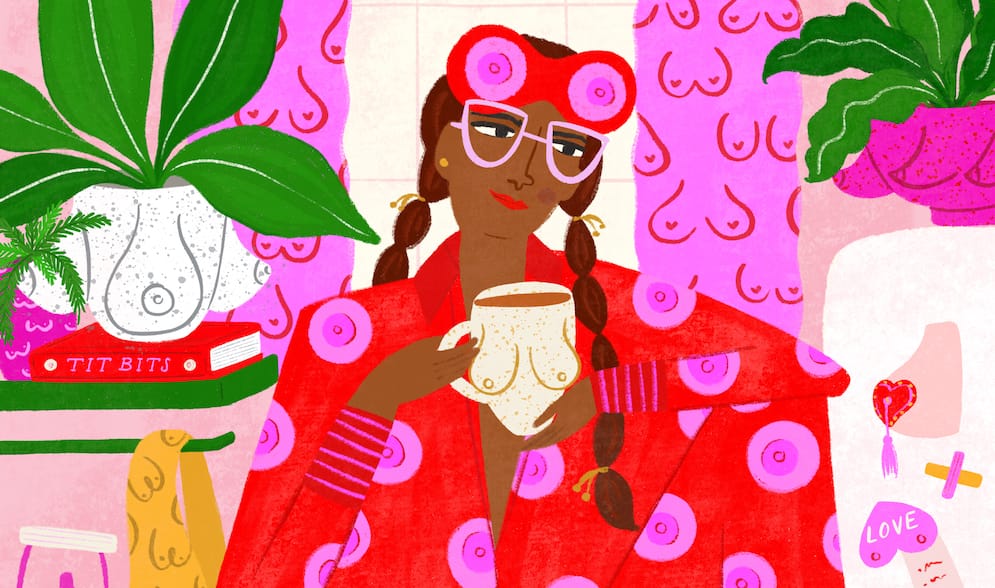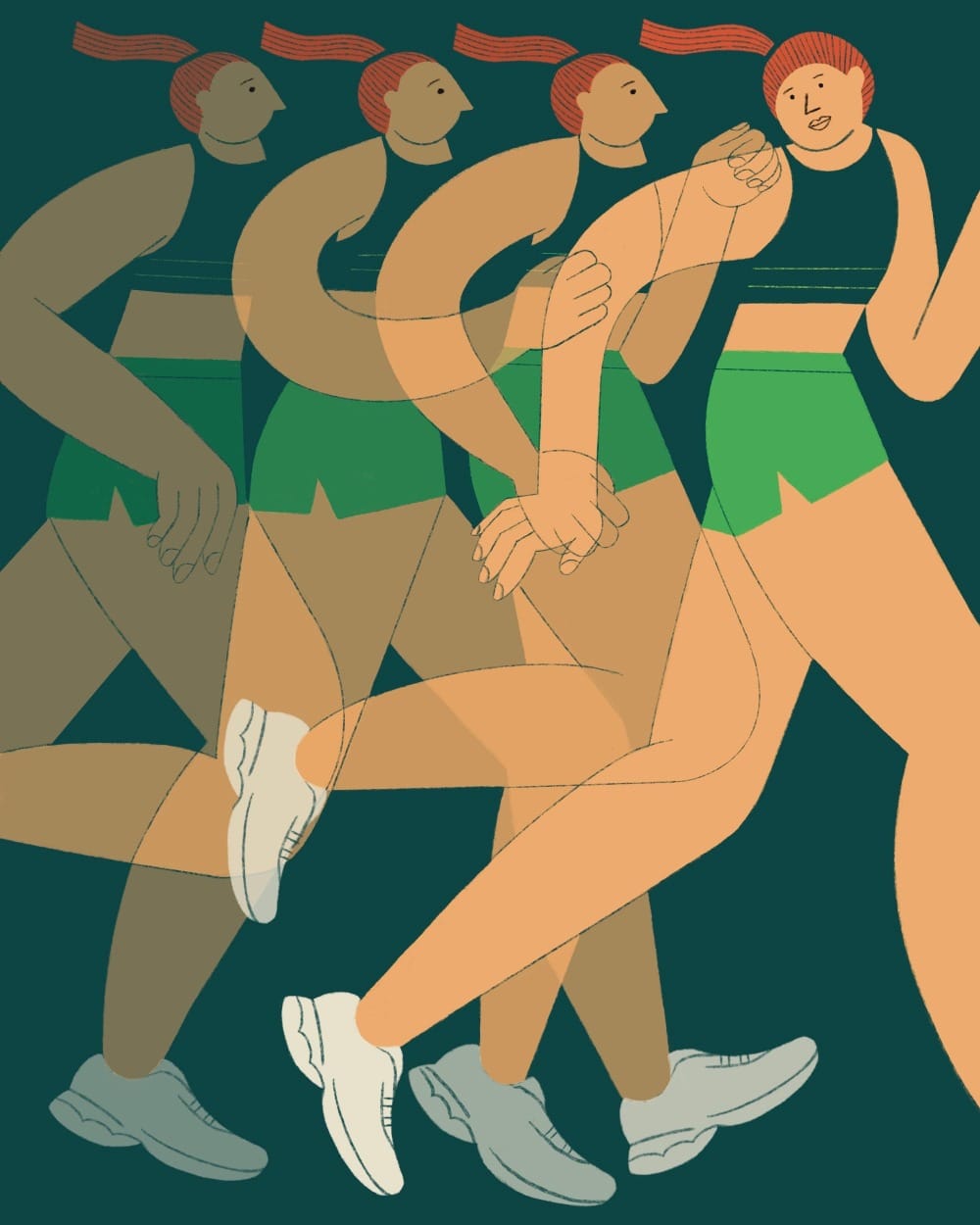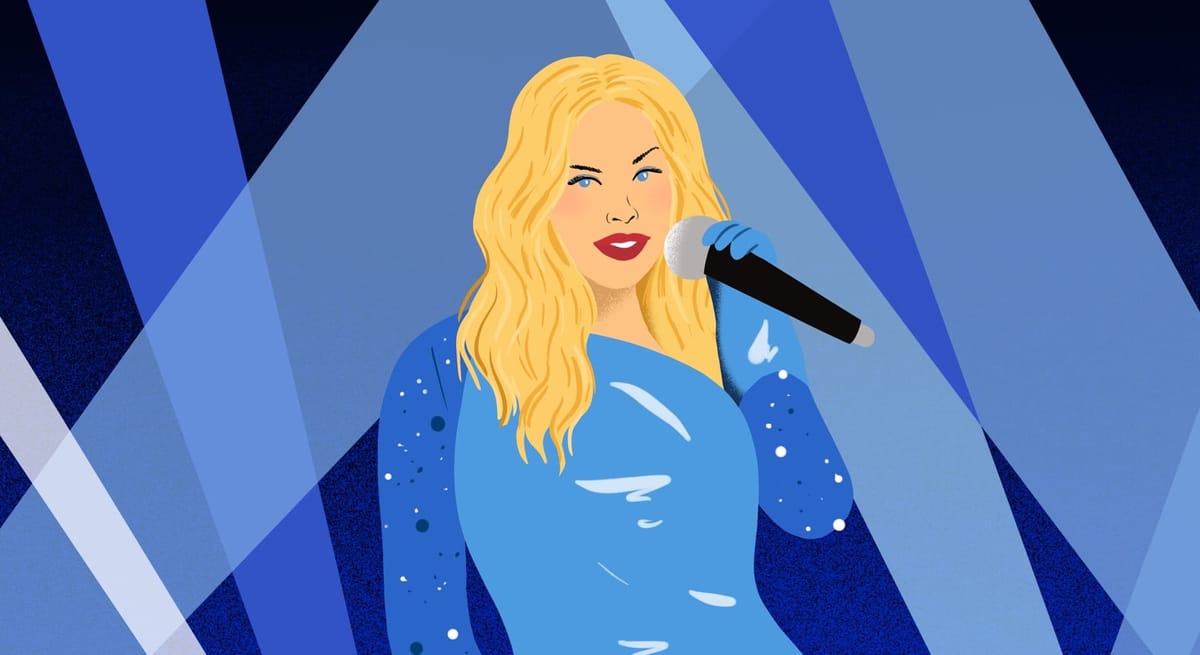Finding Joy in Dark Times Is Essential
Joy can be ridiculous and absurd, beautiful and uplifting, delicious and delightful. The point is to break the cycle of despair.

After the 2024 U.S. presidential election, I started to see “joy” mentioned everywhere.
In a Bluesky post, the congresswoman Alexandra Ocasio-Cortez aggressively urged happiness: “Making joy isn’t denial, it’s how we will survive.” The historian, Heather Cox Richardson, who writes an enormously popular Substack, noted in a video, “Authoritarians cannot rise if there are strong communities and people are acting with joy.” And over on social channels—or at least on my social channels—a line from Mary Oliver’s poem, “Don’t Hesitate,” was being quoted constantly.
“There are plenty of lives and whole towns destroyed or about to be,” but even so, “Joy is not made to be a crumb.”
Then, as if on cue, my editor at The Persistent (Hi, Francesca!) emailed to say she wanted a piece on joy, and I was the one to write it.
Why this sudden emphasis on joy when everything felt so dire? Did joy really have such power? I had to find out.
At first, I felt uncomfortable about investigating joy as a topic—let alone feeling it—when it felt like government checks and balances were being upended, the markets were cratering, and funding and resources were being pulled from scientific research and national parks. I’m a writer and journalist—shouldn’t my writerly powers be used to call out injustice, lay bare falsities, highlight hypocrisy (and muse about boobs)? But the more calls I made to joy experts, the more clear it became that finding joy in dark times really is essential—not only for our well-being and health, but also to help us maintain our capacity to problem-solve and resist. In other words, it’s OK (even important!) to feel good when things feel bad.
The Joy Research Begins
It started like this: I called Emiliana Simon-Thomas, the science director of the Greater Good Science Center and asked how she was doing. “I’m grounded and noticing things that are uplifting,” she said “and breathing through things that are unsettling.”
She taught me some important fundamentals. First off, from an evolutionary perspective, despair and fear do not typically lead to thoughtful action and problem solving. “We want to escape or freeze,” she said of our instinctive reactions. By contrast, positive emotions “motivate us to get out, get curious, pursue things, seek opportunities and secure resources.”
Also, she explained joy is much better for our bodies than perpetual horror—say, endlessly doomscrolling late into the night. Physiologically, excessive and chronic stress can lead to high blood pressure, greater risk for cardiovascular disease and premature death.
Not only that, but if you’re always speaking of doom and gloom, grim-faced with gritted teeth, people like you less, Simon-Thomas explained. (Yes, there is research to back it up.)
But you don’t have to be all-joyful, all the time, either.
As an example, Simon-Thomas said she could both lament a potential decrease in grant funding while also being excited about getting a chai from a coffee shop she loves. “Those two things can exist at the same time and neither will cover up the other one,” she said, “but having them both is what matters.”
If we can’t experience our breadth of emotions and get ourselves out of a cycle of despair, then we’ve “lost our capacity to live a rich and fulfilling life.”
If we can’t experience our breadth of emotions and get ourselves out of a cycle of despair, then we’ve “lost our capacity to live a rich and fulfilling life.” And sometimes joy starts by engaging with the “ridiculous and absurd” to help put your mind in a different place. For example, when Simon-Thomas asked her brother how he was coping, he’d said, “I watch videos of people stepping on rakes.”
Or, as Thomas Chan, an associate professor at Cal State University Northridge explains, it can be anything that you find specifically uplifting—to each, their own. For some, it’s the rake-to-the-face videos. For others it’s exercising, swimming, hiking, or watching a movie. It can be something as small as making yourself a tea or getting a slice of pizza. “The bite of pizza, though it's not going to save us,” said Chan, “can give a little stop to the downward spiral and help you reset.”
Our spirals, he explained, are sort of like a toddler mid-tantrum. Just as you can’t reason with a kid who is sprawled and screaming nor can you be truly thoughtful when you are panicked and depressed.
“It may sound a little trite, like go have your favorite food,” said Chan. “But yeah, go have your favorite food.” After a short silence, he added, “And put your phone down for a minute. No headlines.”
It's OK to Be Joyful?
Still, there seemed something a little off about seeking joy when everything seemed, well, so wrong. When so many are suffering—wars, economic uncertainty, discrimination, job losses, just to start the list—is it actually OK to indulge in delight? I put the question to Philip Watkins, a professor of psychology who specializes in gratitude at Eastern Washington University.
Watkins explained that just because one feels joy doesn't mean that you are disrespecting the difficulties that others might experience. Contradictory as it may seem, he said, joy does not make people turn a blind eye to injustice or oppression. “The evidence suggests the opposite,” Watkins explained, “happy people are much more likely to be activated to be kind and help others.”
“Happy people are much more likely to be activated to be kind and help others.”
I heard something similar when I got in touch with Alan Fiske, a professor at UCLA and a co-creator of the Kama Muta Lab. Kama muta is a Sanskrit term meaning “moved by love.” The term started to appear in scientific publications only as of 2017. It refers to an emotion closely related to joy; defined by a strong sense of belonging, connection and oneness. It is the feeling you have when you watch a video of a soldier surprising her family after a long deployment or when you’re hopelessly lost in a big city and a stranger takes the time to walk you to your destination. “When you experience kama muta,” he said, “you then want to share that feeling—hug someone, call your grandmother, check on an unhoused person or protect that starved shivering kitten on the street.”
In other words, joy can be infectious (in a good way!), filling people with the desire to connect, nurture and help others.
“Cruelty toward other peoples is part of human nature, but love and kindness and appreciation of love and kindness is also part of human nature,” said Fiske.
Fiske even said kama muta plays a role in the continuance of social political protests and marches. “This feeling can be evoked in participants,” he said as they chant, sing and work together for a shared cause, “and that can motivate them to participate more.”
In fact, when people join together in a movement, Chan, who spoke of spirals, said not only do they feel joy, but they also build a sense of community and so much more, “You’ve gone beyond pizza and you’re into meaning and purpose now,” he said, “and that’s truly powerful for one’s well-being.”
So yeah, joy is good. Let’s go get some and change the world.
Five Ways to Find Joy
It can be difficult to shift into joy when the world feels so chaotic and unstable. Here are some evidence-based ways to get your joy kick started.
💛 Gratitude journal
Watkins, an expert in gratitude, suggests listing three good things that have happened to you in the last 48 hours. “They could be small or large,” he said, “like I had a really good dinner last night or I had a great coffee meeting with an old friend.”
He explained this practice has been shown to increase happiness and decrease depression. “It psychologically magnifies and enhances what is good about your life just like a microphone amplifies sound,” he explained. “It is funny because it seems so simple or trite in some ways, but it really is a very powerful thing.”
💛 Make actual conversation
Instead of using social time with friends to complain or process difficult or frustrating events, Simon-Thomas explained, try focusing on the positive. “Actively invite someone to talk about what's going well and what's uplifting and inspiring and motivating for them,” she said.
She explained when we interact in this way, the pathways that represent pleasure and enjoyment in our brains receive more oxygenated blood. “Your body responds to thinking and reflecting on goodness,” she said.
💛 Laughter
A prototypical way of experiencing joy goes way back and given the right situation, can be almost involuntary. “We evolved with this super bizarre behavior,” Simon-Thomas said of laughter, “which is that we exhale quickly in these bursts in a way that is calming physiologically.”
Laughter stimulates your Vagus nerve. “It puts a calming force on your peripheral nervous system that actually makes you feel more relaxed,” she said. So go listen to some jokes or even go make some. Laughter is medicine.
💛 Joy is connection
Identify the five most important relationships in your life and then focus on strengthening your bonds with each of them, said Watkins. “Acknowledge to yourself who they are,” he said, “and then ask yourself, what can I do to enhance our connection?”
He said it could be as simple as a text, a note, sending flowers or making an effort to see them. “Research is suggesting that these connections are really essential to one’s joy,” he said.
💛 Experience the outdoors
And finally, Simon-Thomas, in her own words: “Spend time immersed in nature in a way that evokes a feeling of awe. You might find yourself humbled by the magnificence of the universe. It is a pleasure to give yourself an experience that is more in the category of joy than the category of despair—not to replace it, not to stifle it, not to prevent its being there, but just to have that dynamic agility and that rich co-presence of positive, uplifting, joyful experiences and moments alongside the more difficult moments.”











